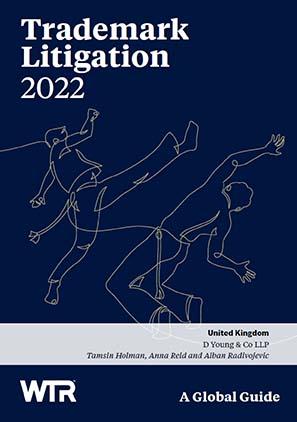General Court: bicycles and motorcycles similar to a low degree
On 14 May 2019 the General Court issued its decision in Zweirad-Center Stadley v European Union Intellectual Property Office (EUIPO) (Case T-12/18).
- Triumph Designs opposed registration of TRIUMPH for bicycles and cycling-related goods based on earlier TRIUMPH mark for, among other things, motorcycles and related accessories
- Board of Appeal upheld opposition for goods in Classes 9, 12 and 25
- General Court found, among other things, that board was right to find low degree of similarity between "bicycles" and "motorcycles" in Class 12
Background
On 3 March 2008 Zweirad-Center Stadler GmbH (‘Zweirad’) led an EU trademark (EUTM) application for the word mark TRIUMPH, covering bicycles and bicycle parts in Class 12, and other bicycle/cycling-related goods in Classes 9, 25 and 28.
Triumph Designs Ltd (‘Triumph Designs’) opposed the application based on its earlier EU word mark TRIUMPH, covering motorcycles and various accessories therefor in Class 12, and other goods in Classes 6, 9, 11, 12, 14, 16, 17, 18 and 28. Triumph Designs alleged double identity between the marks and the goods, and claimed a likelihood of confusion under Articles 8(1)(a) and (b) of Regulation 40/94(now Article 8(1)(a) and (b) of Regulation 2017/1001).
Zweirad requested that Triumph Designs furnish proof of genuine use of its earlier EUTM.
The Opposition Division upheld the opposition in its entirety, nding a likelihood of confusion. Zweirad appealed to the Board of Appeal.
The Board of Appeal partially annulled the opposition, holding that “xed training bicycles” in Class 28 were dissimilar to the goods covered by the earlier EUTM. However, the Board of Appeal maintained the opposition in connection with the remaining goods in Classes 9, 12 and 25 of the application.
Action before the General Court
Zweirad appealed to the General Court, alleging that the Board of Appeal had incorrectly assessed:
- (i) the level of distinctiveness of the earlier mark;
- (ii) the similarity between the goods; and
- (iii) the impact the distinctive character of the earlier EUTM on the likelihood of confusion.
As regards (i), the Board of Appeal found the earlier mark to be inherently distinctive and of high distinctive character based on the evidence of genuine use submitted by Triumph Designs. On appeal, the applicant argued that the TRIUMPH mark was weakly distinctive. The General Court conceded that the English-speaking consumer would understand the word ‘triumph’ to mean ‘victory’ (alluding to high performance leading to success). However, such a finding did not mean the mark was entirely devoid of distinctive character. Further, Triumph Designs submitted evidence of sales and market share in the European Union during the two years prior to the ling of the application, and the General Court upheld the Board of Appeal’s finding of an enhanced distinctiveness through use on that basis.
As regards (ii), the Board of Appeal held “bicycles” and “motorcycles” to be similar to a low degree. Zweirad disputed this as the goods were, in its view, different in nature, overall concept, form and structure, and were made from different materials. The General Court held that the Board of Appeal had not erred by nding a low degree of similarity, given that the goods shared the purpose of locomotion and could be used for leisure and entertainment purposes. Further, the General Court agreed with the Board of Appeal that there was a market intersection between bicycles and motorcycles, highlighting that both have two wheels, a seat or saddle, and a handlebar and may also have similar origin (“many manufacturers of motorcycles, including the intervener, also produced bicycles, although that is less common nowadays than in the past”, Paragraph 28). Reference was also made to the judgment of 16 May 2007 Trek Bicycle v OHIM (ALLTREK) (Case T-158/05), in which “motor cars and parts thereof” and bicycles were considered to be similar to a low degree.
The General Court also held there to be a low degree of similarity between various bicycle parts/accessories of the application and “parts, accessories and fittings [of motorcycles]” of the earlier mark. The “protective clothing for motorcyclists” covered by the Triumph Designs registration was similar to “bicycle sports helmets” in Class 9 and various cycling clothing in Class 25 of the application, given their shared intended purpose and method of use.
As regards (iii), the General Court pointed out that the two signs were identical, a fact which could offset the finding of a low degree of similarity between the goods (in line with the principle of interdependence). Further, given the earlier mark was held to have an enhanced distinctive character, consumer confusion was considered to be more likely despite the finding that the goods were similar to a low degree.
The General Court dismissed Zweirad’s appeal in its entirety and upheld the Board of Appeal’s decision.
This article first appeared on WTR Daily, part of World Trademark Review, in May 2019. For further information, please go to www.worldtrademarkreview.com.
Read more
